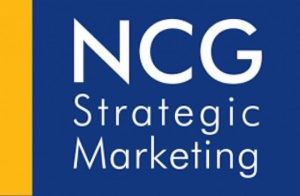
What could your law firm possibly have in common with your city’s symphony orchestra? More than you may think.
The L.A. Times recently published a fascinating story about the many challenges faced by the Los Angeles Philharmonic and other orchestras. As the Times describes the situation, “Orchestras across the country have been shaken by the loss of subscribers, aging audiences, declining corporate donations, labor strife and the struggle of remaining relevant in an era when technology is redefining how people spend their leisure hours.”
Looking at this list of five concerns, it struck me that orchestras and law firms are much closer in spirit than one might think, and that there are more similarities than differences in the challenges they’re facing. Many of the same long-term trends are dramatically affecting both businesses, and in ways that are more sweeping than incremental. Could it benefit lawyers to hear about the challenges facing orchestras? Quite possibly.
Tradition is good, until it’s not
The common denominator is that both industries are steeped in centuries-old traditions – which in some ways, can be part of their appeal. Traditions connote stability, timelessness and gravitas. These can be good things. Very good things, in fact. However, traditions become a problem when they allow people to be more comfortable with the past than the present, to be overly resistant to change, and to be fearful of the future. For lawyers, this perspective often manifests itself in a reluctance to embrace the critical roles that strategic branding, digital marketing and online business development now play in a law firm’s success. With that in mind, let’s take a closer look at the issues facing both orchestras and law firms.
Where’s the loyalty?
First in the list of orchestras’ concerns: loss of subscribers. For law firms, this is the equivalent of losing clients. Think about this with respect to your practice, and how in recent years you may have lost some of your most loyal, repeat clients. You bemoan this loss of loyalty with your fellow lawyers, just as an orchestra director shakes her head over empty seats.
Loyalty isn’t what it used to be, now that law firms are so easily researched and compared. You need to know what your clients are asking themselves when they are trying to decide whether to stay with you or switch to another law firm. High on this list of questions will be the following: Are you giving them the attention they deserve? How high are they on your priority list? Are you too expensive? Could they get just as good (or better) legal services and client service for less money somewhere else?
Where are the Millennials? And Gen X?
Next on the list is aging audiences: Just as orchestras today are rightly concerned about this, perhaps you’ve been pondering the lack of attention your law firm has been getting from the under-40 crowd. It’s important to note that even if that younger demographic is not part of your target market, that still doesn’t mean you can relax. Will they magically appear at your doorstep when they hit 40 or 45 or 50? The Millennials aren’t making decisions of any type in the same way their fathers and mothers did, whether it’s choosing a career, where to live, or deciding upon an attorney. In a nutshell, it’s not what’s happening this year that’s critical to your business; it’s what lies ahead.
Show me the money
The third issue for orchestras is declining corporate donations. Why is that? Well, there are many more nonprofits than there used to be, and some are better than others at connecting with donors. For law firms, the concern is stagnant – or even declining – revenues. What’s the cause? It may be coming from downward pressure on your hourly (or fixed) rates, or, it may be coming from decreasing numbers of clients. Worse, it may be coming from both.
Perhaps you’re not getting the numbers of referrals that you used to. Those great referral sources you relied on have dried up. Or maybe your website isn’t ranking as highly in Google, and fewer people are coming across your site. Or, perhaps, your Google Analytics tells you that just as many people are visiting your website as before, but fewer are giving you a call, maybe because your site doesn’t connect with them or give them a compelling reason to connect with you. Whatever the cause of stagnant or declining revenues, it means that your law firm is feeling the pressure of increasing competition, and just like the L.A. Philharmonic, you’re probably pretty busy trying to figure out how to turn things around.
Good help is hard to find
Unlike the other items on the list, the fourth item – labor strife – is a pressure from within the firm rather than an external threat. Stagnant or falling revenues and increased pressure on margins frequently have the effect of management asking workers to do more with less. And the law has never seen anything quite like Generation Y before. The Millennials are now raising their collective head and indicating that while they may want to work for you, they definitely do not want to make all the sacrifices for work that you made as a young attorney. Whether their desired work/life balance is a little different from yours – or whether they’re just more willing to vocalize their desires – Gen Y is likely making you rethink a few things about the way your law firm operates.
Technology is changing everything
And finally, the fifth issue, which cannot be overstated: If technology is “redefining how people spend their leisure hours” (and it is, of course), it’s just as strongly influencing how increasing numbers of individuals and businesses choose their legal services. They may not be looking for an attorney per se as much as they’re looking for a solution to a legal problem. Can they do that entirely without lawyers? Perhaps not, but companies such as LegalZoom and Rocket Lawyer are pushing the envelope to find the right technology-based or technology-plus-lawyer hybrid solution.
And those people whose devotion to Airbnb and Uber is putting fear into the hotel and taxicab industries are the very same people who are open to new ways of thinking about how legal services should be delivered. The number of options for the delivery of legal services keeps increasing, and the quality is going to continue to improve. It would be dangerous to assume that the level of quality of the online or hybrid solutions you see today is what it will be in 10 years – or even in five.
What’s the solution?
So, in the face of these challenges, the question is this: What is it going to take to keep a steady stream of new clients calling you up over the next 5 years, 10, years, and beyond? At some law firms, you will hear the argument that the only thing needed right now is exactly the same as what has always been required: Just keep providing top-notch legal services and good client service at a fair price.
And certainly, those traditional elements are crucial to a law firm’s success. But as I will discuss further in the upcoming Part II of this post, excellent legal work and good client service at a fair price are really just the beginning. What is needed in today’s highly competitive, fast-moving, technology-driven market – whether it’s the world of classical music or the law – is vision.
What George H.W. Bush called “the vision thing” has been at various times both celebrated and scorned. And yet, without a strategic vision, how can one even attempt to tackle some of the big challenges facing the practice of law? These challenges will demand creativity, innovation, passion and perseverance, all of which will provide a solid foundation for being successful throughout the 21st century, whether you’re a law firm or a symphony orchestra.
Next Time: Fiddling While Rome Burns, Part II: The Importance of Vision (and Execution) for Law Firms in 2015


